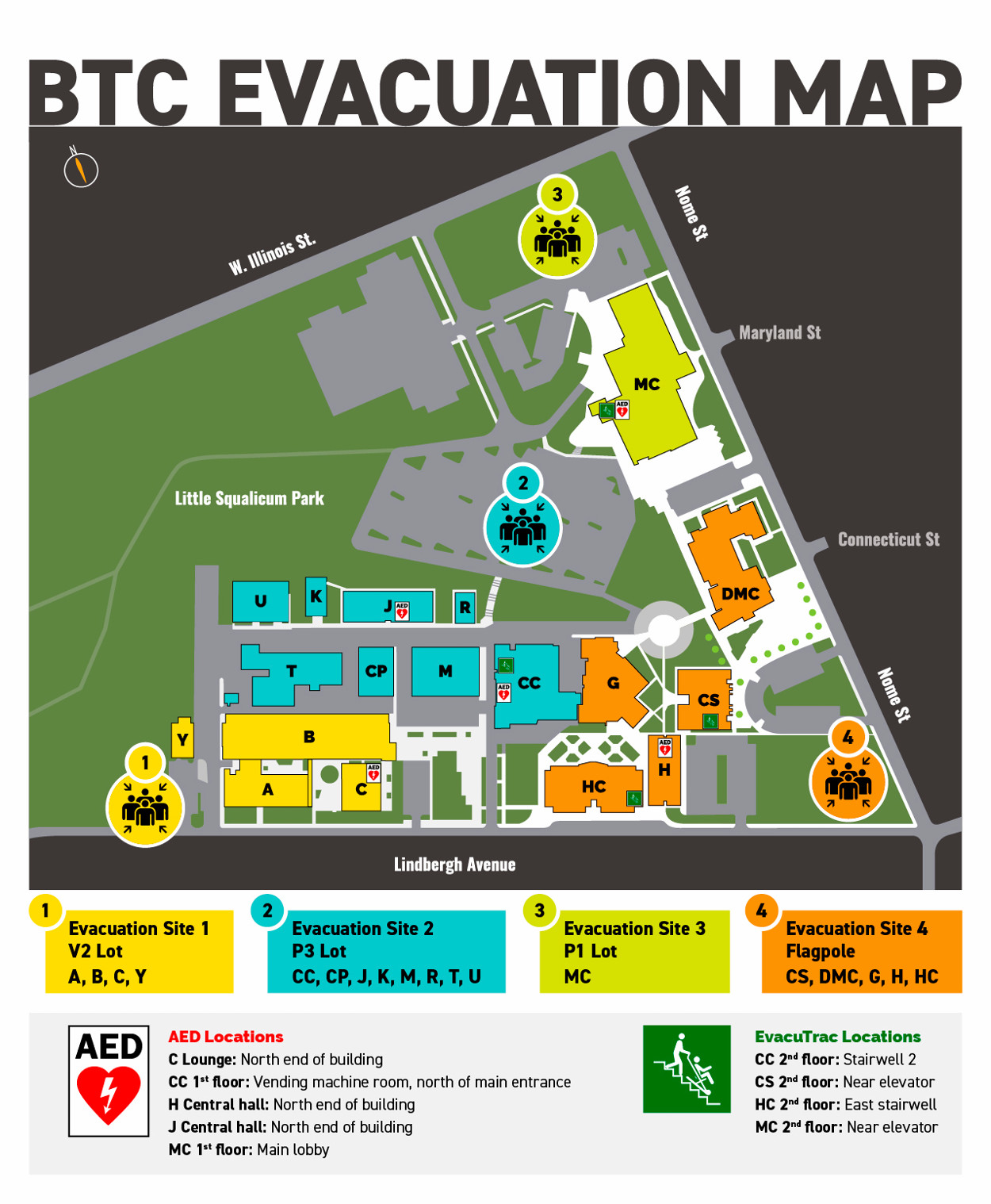BTC Emergency Readiness
Your Emergency Response Matters
You may not feel in control during an emergency, such as an earthquake, fire, or active shooter event. But your response can help you, and the people around you, get through the emergency safely and recover more quickly afterwards. Here are some beneficial actions you can take in any emergency:
Stay Calm
- Allows you to think more clearly and make better choices.
- Helps the people around you stay calm, think more clearly and make better choices.
- Frees emergency responders and building responders to focus on emergency response, rather than on your reaction to the emergency.
Follow Instructions
In an emergency, you may get instructions from:
- BTC Alerts
- Building Responders
- First responders, including emergency medical technicians, firefighters, and police officers
Follow those instructions to keep yourself and everyone else safe.
Help People Who Need Assistance
The people around you may need physical or medical assistance before or after an emergency.
Physical Assistance
As you take whatever action is required in an emergency, provide whatever assistance is needed to people around you with disabilities and mobility issues if you can safely do so.
Medical Assistance
Provide only the level of medical care you are trained to provide. If you can’t provide medical care, you can still:
- Point out people in need of medical assistance to first responders
- Wait with an injured person until help arrives, if safe to do so.
Standard Response Protocols
The Standard Response Protocol (SRP) is based on an all-hazards approach as opposed to individual scenarios. Bellingham Technical College is expanding our campus safety program to include the SRP, which is based on these five actions: Hold, Secure, Lockdown, Evacuate and Shelter. In the event of an emergency, these actions and appropriate direction will be broadcast via BTC Alert and other emergency notification methods.

